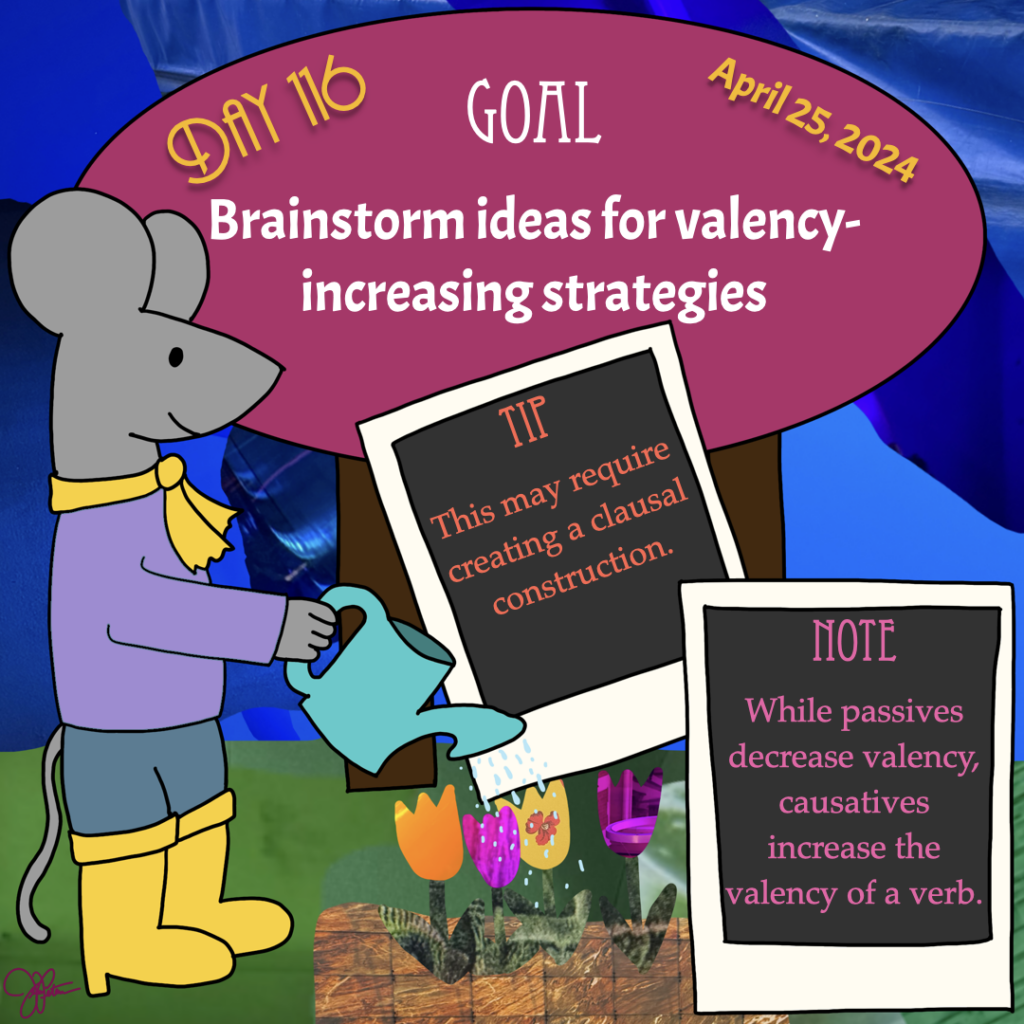
Goal: Brainstorm ideas for valency-increasing strategies
Note: While passives decrease valency, causatives increase the valency of a verb.
Tip: This may require creating a clausal construction.
Work focus: Learn/Brainstorm/Try
Today’s goal is to start generating ideas for how you might handle valency-increasing strategies, such as the causative. A causative adds an argument to a verb’s valency structure, where a subject/agent is the cause of someone else performing the action of a verb. In some languages, a causative form occurs with the verb (e.g. as an affix on the main verb form), with special marking on the arguments (e.g. particular case requirements for all the arguments in the causative clause structure). In other languages, the causative is a grammatical construction.
Consider the sentence “Mellie made Kai eat the vegetables.” The verb eat as a transitive verb has two arguments, the eater and the food being eaten. With the causative, though, another agent is added—the one who makes the situation occur or creates a situation that allows the verb to occur. In this case, Mellie is added as the one causing the eating to happen. English only has causative forms as grammatical constructions where an added verb and embedded clause structure is required.
You could, however, create a strategy that might follow this kind of structure: Mellie(SUBJECT) eat-CAUSATIVE Kai(OBJECT) vegetables(OBLIQUE). If you are interested in creating a morphological causative form, I encourage you to spend the day researching the ways other languages do that (especially languages with a similar word order and case-marking system!) to get inspiration for what you might do. Tomorrow you will lay out a plan for your language, so use today to have fun exploring some of the options!
